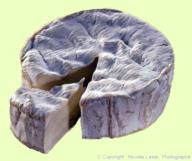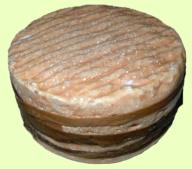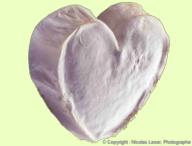|
|
The first traces of the Normandy cheese are 911 through writings on time testifying to this activity. |
| | |
|
| | First component of a broader farming of livestock, it will very quickly develop to become an important source of income and taxes at the same time. |
| | |
|
|
Originally located in the Pays de Bray (Basse-Normandy and the Pays d'Auge is then turned to the polyculture, the breeding of meat) activity will develop between the 12th and 13th centuries with the competition of English cheeses.
|
| |
The cheeses are then sold under the title of "angelots" and even if some markets such as Livarot and Pont l'Evêque already acquired a certain notoriety, these cheeses will be primarily consumed on-site until the 18th century. |
| |
|
| It is only from that time that the marketing and the cheese industry will develop strongly. With the conversion of some farmers of the Pays d'Auge.
This region will become the first soft cheese-producing region during the 20th century ! |
| |
|
|
|
The Normandy which is also the first French region producing cheeses cow's milk with about 25% of domestic production, has 4 cheeses A.O.C. : | | Camembert of Normandy | : | raw milk, soft cheese, crust flowered; | | Livarot | : | milk raw or pasteurized, soft cheese, crust washed. | | Pont l'Evêque | : | milk raw or pasteurized soft crust washed. | | Neuchatel | : | milk raw or pasteurized, soft cheese, Bloomy rind. |
|
| | |
|
|  The Camembert of Normandy A.O.C. : |
| |
|
| 
Camembert de Normandie is a cow's milk cheese raw milk, soft and flowered crust of cylindrical shape that contains 45% of fat.
The legend would like that he was born of the ladle of Marie Harel in 1793 in a small village in the country of Auge Ornais called Camembert. The Secret of the Camembert would have revealed to him by a refractory priest that she was hiding on his farm in Beaumoncel near Vimoutiers. It would appear, however, that this cheese was already known in the region of Vimoutiers two centuries previously.
This pie chart, French, emblem of our nation abroad, favorite cheese enjoys an A.O.C. Camembert of Normandy since 1983. |
| |
|
|
| 
Livarot that nicknamed "colonel" because of 5 "stripes" grass (sedge) that surrounds it, is the cheese of the Pays d'Auge by excellence since it is produced in this region. This cheese which was also sold under the name of "angelot" or "augelot" on the market of the small village of the Pays d'Auge which will give it its name, is certainly one of the oldest in Normandy. Also called Petit Lisieux or Mignot, it will get the appellation of origin in 1975.
It is a cheese of cow milk to soft dough crust washed and pressed cylindrical appearance and yellow-orange color (used for washing annatto color) surrounded by 5 "sedges" Reed.
It may be sold in 5 formats :- large Livarot;
- Livarot;
- the three quarter Livarot.
- small Livarot;
- quarter Livarot.
|
| |
|
|
| 
The Pont-l'Evêque is a cheese square milk of cow semi-soft washed-rind colour grey-white streaked thin strips red and from the village of the Pays d'Auge which gives it its name.
First produced by monks in an Abbey of the pays d'Auge, then sold under the name of "augelot" or "angelot" on the walk from the village of Pont l'Evêque, it gained its notoriety of the 13th century but will be rewarded by the A.O.C. until 1976.
It can be found in 4 formats : - Pont-l''Evêque (105 to 115 mm) ;
- great Pont-l'Evêque (190 to 210 mm side);
- small Pont-l'Evêque (90-95 mm on each side);
- half Pont-l'Evêque rectangular (110 on 55 mm on each side).
|
| |
|
|
| 
This cheese with cow's milk to soft dough and crust, easily recognizable in its traditional form, was born in the heart of the Bocage of the Pays de Bray in Haute-Normandie.
Already mentioned in writings dating from 1035, it is probably the oldest Norman cheese!
After a multitude of steps the Neufchatel will get his A.O.C. in 1986 which will be updated in 2006.
|
| |
|
|
|
